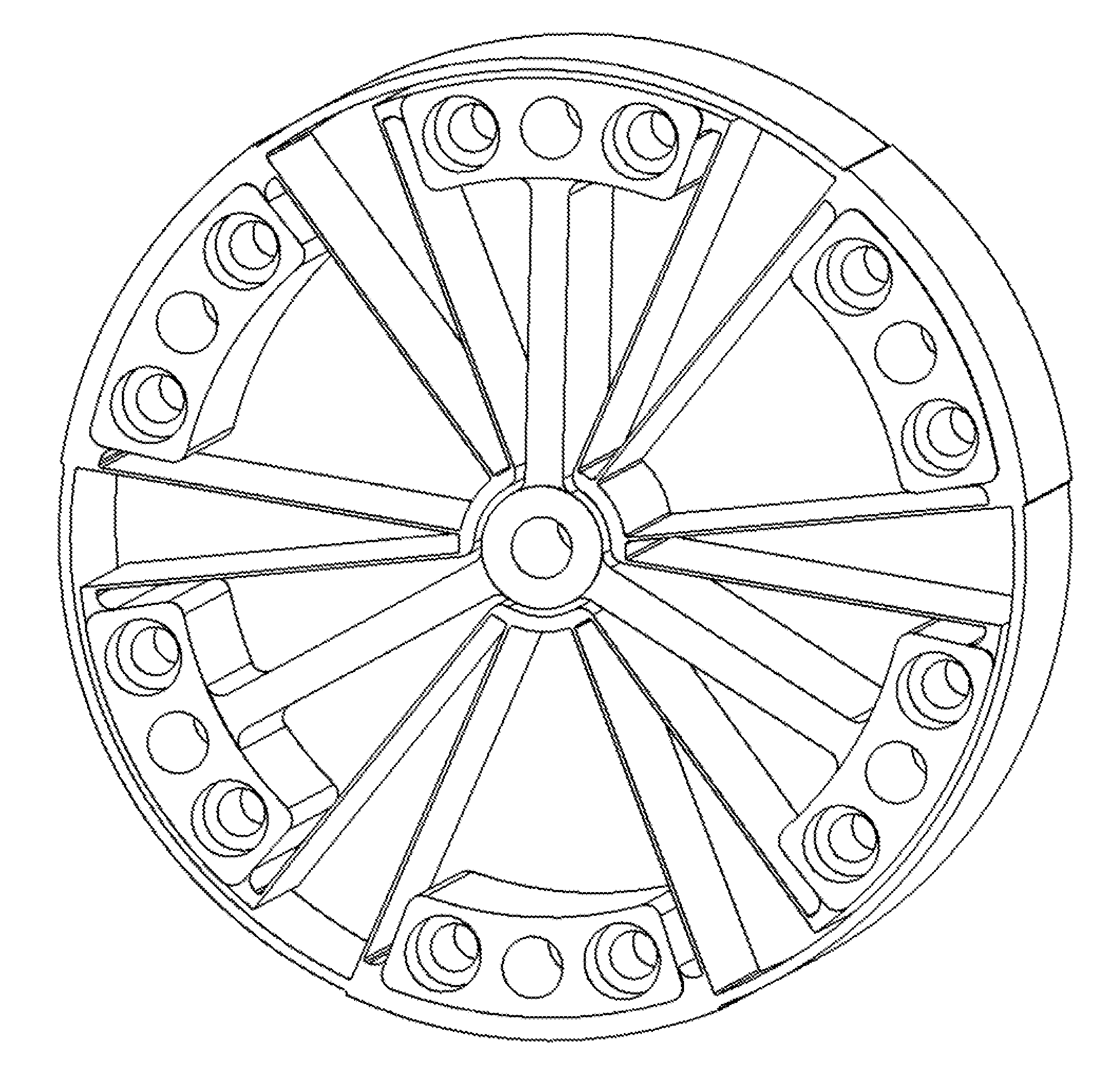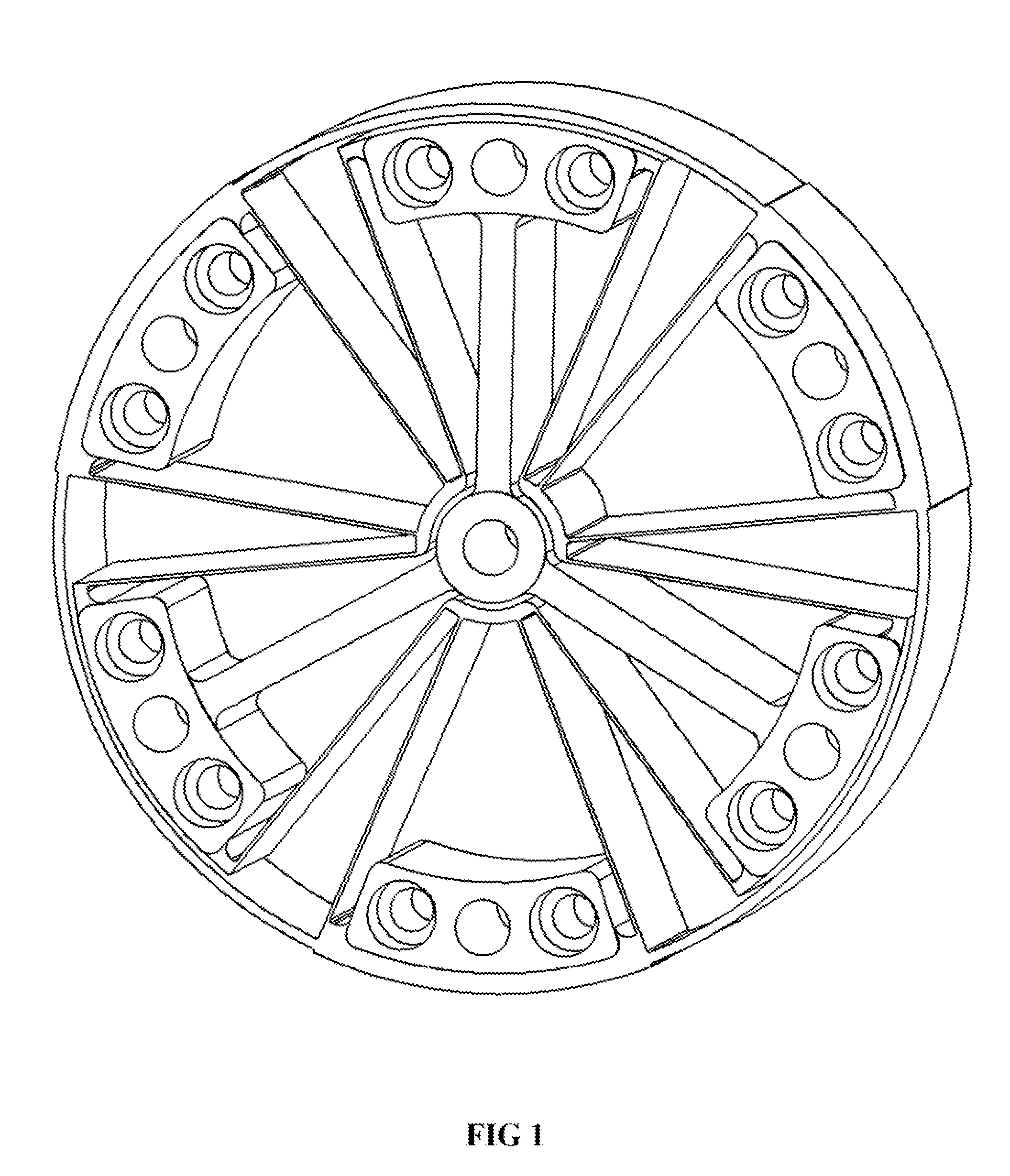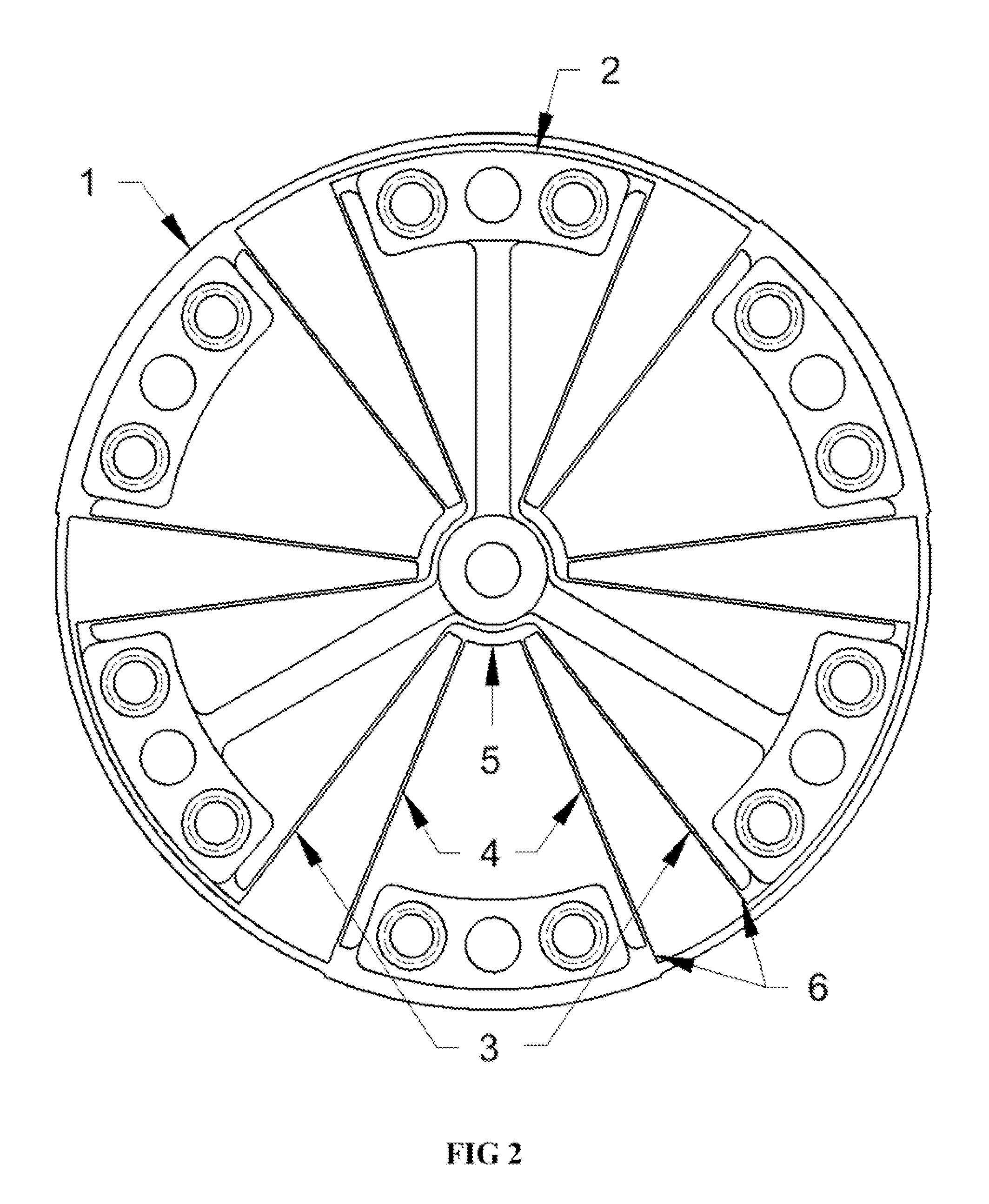Rotary flexure bearing
a bearing and flexure technology, applied in the direction of vehicles/pulleys, mechanical devices, couplings, etc., can solve the problems of increasing the coaxial error between the desired and actual axis of rotation, and catastrophic failure, and achieve the effect of eliminating the need for user-designed mounting hardwar
- Summary
- Abstract
- Description
- Claims
- Application Information
AI Technical Summary
Benefits of technology
Problems solved by technology
Method used
Image
Examples
Embodiment Construction
[0023]The arrangement of three compound flexure stages can be seen in FIG. 2. Each compound stage has four blade flexures. All twelve blade flexures are the same thickness, width, and length, therefore have the same stiffness as well. The two inner blade flexures 4 in each compound stage connect the outer hub l of the rotary flexure bearing to the regulator link 5. The two outer blade flexures 3 in each compound stage connect the three-legged inner hub 2 to the regulator link 5. Each of the three compound stages is defined by one inner blade flexure stage and one outer blade flexure stage that are nested together. The inner blade flexure stage consists of the inner blade flexures and the regulator link while the outer blade flexure stage is defined by the outer blade flexures and regulator link. The regulator link is shared by both the inner and outer blade flexure stages and allows the two stages to work together as a complete compound flexure stage. The inner blade flexure stage h...
PUM
 Login to View More
Login to View More Abstract
Description
Claims
Application Information
 Login to View More
Login to View More - R&D
- Intellectual Property
- Life Sciences
- Materials
- Tech Scout
- Unparalleled Data Quality
- Higher Quality Content
- 60% Fewer Hallucinations
Browse by: Latest US Patents, China's latest patents, Technical Efficacy Thesaurus, Application Domain, Technology Topic, Popular Technical Reports.
© 2025 PatSnap. All rights reserved.Legal|Privacy policy|Modern Slavery Act Transparency Statement|Sitemap|About US| Contact US: help@patsnap.com



